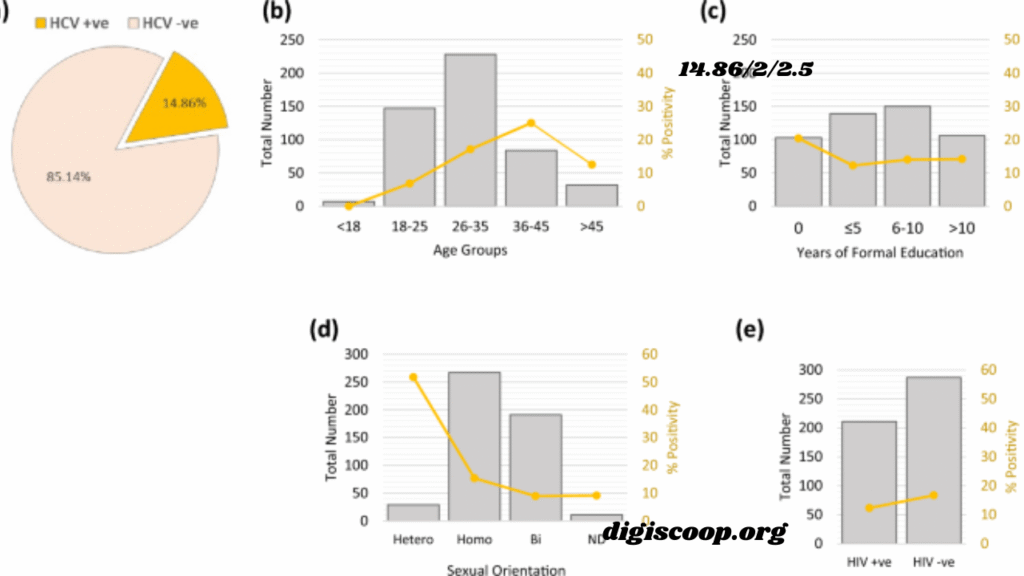When we look at the sequence 14.86/2/2.5, ??, it might at first appear as a random fraction or a cryptic equation. But when explored closely, this expression opens a window into simple division, ratios, scaling, and the broader applications of numbers in real life. In this article, we will break down what 14.86/2/2.5 means, how it works mathematically, and why such expressions matter.
Breaking Down 14.86/2/2.5

The expression 14.86/2/2.5 is a straightforward division problem. To understand it step by step:
- Start with 14.86 ÷ 2 = 7.43
- Then, take the result and divide it by 2.5
- 7.43 ÷ 2.5 = 2.972
So, the simplified answer to 14.86/2/2.5 is 2.972.
This numerical result may look ordinary, but the method of breaking it down is what makes it significant. Each part of the division shows how larger numbers can be scaled down or compared in layers, which is often how we handle real-world problems in finance, science, and daily calculations.
The Meaning of Division in This Context

Division is more than splitting numbers. When we say 14.86/2/2.5, we are working with successive ratios. First, halving the value, and then scaling that half further by dividing it by 2.5.
- The first division (14.86/2) cuts the original quantity in half.
- The second division (/2.5) shrinks that half even more, reducing it to roughly 40% of the already halved amount.
This layered division illustrates how values change in stages. It’s not simply about getting a final number but about seeing the step-by-step transformation.
Why Numbers Like 14.86 Matter

The number 14.86 may seem random, but decimals like this are common in practical settings:
- Finance: Interest rates, currency exchange, or stock values often contain decimals.
- Engineering: Measurements like lengths, voltages, or speeds are frequently expressed with precision.
- Science: Experimental values and constants are rarely whole numbers.
When such numbers are divided, like in 14.86/2/2.5, the result represents scaling down a measurement, cost, or unit to something smaller and more precise.
The “??” in 14.86/2/2.5, ??
The inclusion of “??” after the expression 14.86/2/2.5 creates curiosity. It can be seen in two ways:
- As a Placeholder for the Answer
It might simply stand for the solution to the calculation, which we determined is 2.972. - As an Open Question
It could also mean that there’s something more to explore. Numbers often lead to further questions. For example:- What does this ratio represent?
- Is it part of a larger formula?
- Could it symbolize efficiency, cost, or scaling?
The “??” makes us think about numbers not just as dry outputs, but as prompts for deeper understanding.
Applications of 14.86/2/2.5 in Real Life
While the equation seems abstract, it mirrors scenarios where numbers must be broken down systematically:
- Budgeting: Imagine you have $14.86, split it between two people, and then distribute that half into smaller equal portions (like dividing among 2.5 parts).
- Measurement Scaling: A recipe calls for 14.86 grams of an ingredient, halved for a smaller serving, and further adjusted for 2.5 portions.
- Workload Division: A task taking 14.86 hours might be divided among two teams, and then adjusted for 2.5 shifts or phases.
These scenarios show how mathematical expressions like 14.86/2/2.5 reflect real decision-making processes.
Ratios and Proportions in Perspective
The double division hints at the concept of ratios within ratios. By halving and then scaling down again, we get a nested ratio. This teaches us that:
- 14.86 is the whole.
- 14.86/2 = 7.43 is the first ratio (half).
- 7.43/2.5 = 2.972 is the second ratio (portion of the half).
This layering is fundamental in math. It’s how we compare parts of parts and see the relationship between numbers on different scales.
The Simplicity Behind Complex Numbers
At first glance, 14.86/2/2.5 might seem complicated, especially with decimals. But by breaking it step by step, the complexity vanishes. What’s left is a simple truth: any large or small decimal can be handled logically if approached methodically.
The ?? reminds us that math is often about exploration, not just arriving at answers. Numbers open doors to multiple interpretations, from raw calculations to meaningful insights.
Conclusion
The expression 14.86/2/2.5, ?? is more than just a math problem. It’s an example of how numbers work in stages, how division layers values, and how even a small decimal can reflect real-life situations. The final result, 2.972, is important, but the process of getting there is equally valuable.
Mathematics thrives on curiosity, and the “??” in this sequence represents that curiosity. It asks us not to stop at the calculation but to look for meaning in the numbers we use daily. From finance to recipes, workloads to scientific data, expressions like 14.86/2/2.5 remind us that numbers are not abstract—they are tools to understand and organize the world.
Also Read : When Wase Homeworkify Created, ?? — A Detailed Look at the Origins







